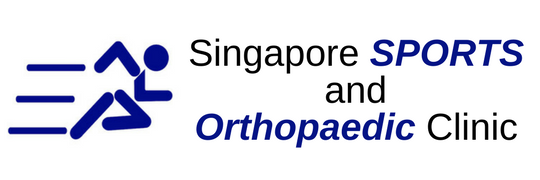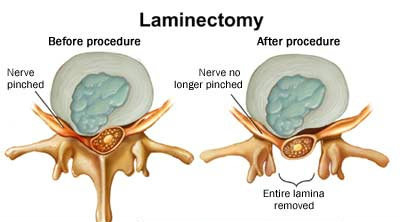A laminectomy procedure on the lower back is one of the most common procedures to treat spinal stenosis, a narrowing of space around the spinal cord. In a laminectomy, surgeons remove the lamina, a bony structure that protects the spinal cord, to relieve pressure causing neural issues and pain. Following a laminectomy surgery, orthopaedic care can aid in the recovery process and help you get back to feeling your best.
Reasons for Undergoing a Laminectomy
Essentially, a laminectomy is performed when other options to alleviate the problem fail to work – it is often a last resort.
The spine is a complex structure. It is made up of 33 vertebrae or bones. These bones of the spine protect the spinal cord. The spinal cord is home to an intricate network of neural bundles stemming from the brain. The brain and spinal cord are the structures that comprise the central nervous system. The central nervous system drives every movement, breath, and thought we make. It is the center of our being. Damage to the spinal cord can cause varying degrees of problems, including paralysis and regulatory functioning issues.
The lamina is the back arch of the vertebrae bone. It protects the spinal cord from outside impact or harm. When abnormalities or bony overgrowths develop on the spine, neural functioning may become significantly impaired and pain may occur. Spinal stenosis, a narrowing of the spinal canal, may create pressure on the nerves that run through the spine. Bony overgrowths due to age or arthritis may also compress these fragile neural networks.
Consequently, pain, numbness, and weakness may occur. In severe cases, the individual may struggle to walk and may lose control of their bladder and bowel movements. When the symptoms become severe enough that they impact day-to-day function and when other treatment options fail to work, a laminectomy is performed. In other words, the lamina portion of the vertebrae is removed.
What Does a Laminectomy Involve?
A laminectomy surgery in Singapore involves the use of general anesthesia. However, before surgery the appropriate tests and examinations are performed to ensure as little risk as possible. Your doctor will also ask you to avoid food and drinks for a set time before surgery. Your doctor will also ask that you avoid NSAID, nonsteroidal anti-inflammatory drugs, the week before your surgery.
Depending on the part of the spine that the laminectomy is performed on, it often lasts 1-2 hours. The medical team measures your heart rate, blood pressure, and oxygen levels throughout the procedure.
An incision is made at the affected vertebrae. The aggravating part of the lamina is removed, relieving pressure off of the spinal cord. Depending on the severity and type of condition you have, the surgery may also involve spinal fusion or the removal of a slipped disc. Your surgeon will discuss the plan with you beforehand.
Following a laminectomy surgery, the surgery team will take you to a recovery room. Some will be required to stay in the hospital of a few days, while others may undergo a same-day discharge. It entirely depends on the severity of your situation and how invasive the surgery was.
What Are the Risks of a Laminectomy Surgery in Singapore?
As with any surgery, there are varying risks involved. These risks include:
- Infection
- Damage to the spinal cord
- Spinal fluid leak
- No change in back pain
- Stroke
- Heart Attack
- Blood loss
- Blood clots
- Respiratory issues
Frequently, individuals experience relief after surgery. However, surgery may not fully eliminate the cause and it will only remove the decompression in the part of the spine operated on. For example, arthritis or spinal stenosis may still progress after surgery.
The Immediate Recovery Process
The surgeon will likely require you to walk and perform movements right after the surgery. These tests will ensure no damage was done to the spinal cord. They may also prescribe pain relief medication during the initial recovery stage.
Take the advice of your surgeon, and slowly and gradually increase your activity levels. Follow-up appointments will help guide you through the recovery phases. Recovery is often 2-6 weeks. Again, it may depend on your condition and the exact type of surgery performed. For example, if a bone fusion was also performed your doctor may recommend a back brace as part of the recovery process, and your recovery may be slightly longer.
You will have to work to keep the incision clean and dry, particularly the first few days after surgery. If swelling or tenderness occurs at the incision site, seek out medical attention immediately. An infection could potentially develop. Your surgeon will outline how to avoid infection following the surgery.
General advice following a laminectomy surgery in Singapore includes:
- Avoid sitting for long durations.
- Avoid driving for 2-4 weeks right after surgery. Discuss your options and prognosis with your surgeon.
- Avoid heavy lifting.
- Do not bend or twist the torso. This could potentially open the incision and cause other problems.
- Do not smoke. Smoking may interfere with your body’s ability to heal properly and quickly.
- Avoid travelling. Car rides or plane rides may increase your risk of developing a blood clot.
Long-term Recovery
Back surgery sounds scary. It is absolutely normal to experience worries or concerns regarding your surgery and recovery. Ask questions beforehand and after the procedure. Our team of surgeons and doctors would be more than happy to address any concerns you may have.
At the 6 week mark, regular activities can often gradually be resumed. Neural pain may subside in about 4-6 weeks. And pain and swelling will decrease over time and eventually, with use.
Following a laminectomy, chiropractic care and physiotherapy may be recommended to help guide the rehabilitation process. Chiropractic treatment can also coincide with physiotherapy treatment, and vice versa.
However, initial healing must take place before you seek out chiropractic or physiotherapy care. The body is fragile after surgery and a certain amount of rest and time must take place before any spinal manipulation is performed. Often, physiotherapy and chiropractic care can begin about 2 weeks post-surgery.
Research has also supported post-surgery chiropractic and physiotherapy treatment. In the case of a laminectomy, patients reported improved function, mobility, and decreased pain with treatment. No adverse or detrimental effects were reported.
What Can I Expect Post-Surgery?
Most experience reduced back pain symptoms. A Laminectomy surgery improves pain in about 70% of patients.
If you follow proper guidelines and instructions, your quality of life may significantly improve post-surgery. A positive attitude and proper care following your surgery can go a long way and can drastically impact your results. However, you may not notice the results straight away. It may take up to 6 weeks to notice any notable difference.
Chiropractic care and physiotherapy can also help restore mobility and reduce incidences of pain during the later stages of your recovery. Your healthcare provider can recommend exercises throughout the recovery process to help you get back to your regular activities and improve your outcome.
Make sure to always follow the direct advice and instructions from your doctor.
For more information regarding laminectomy procedures and post-surgery care, contact us at +65 9734 3087. If you wish to have your back pain assessed, book an appointment. At the Singapore Sports and Orthopaedic Clinic, our orthopaedic specialists are ready to help you get back to the activities you know and love. Call us today. Start your journey toward a better life.








